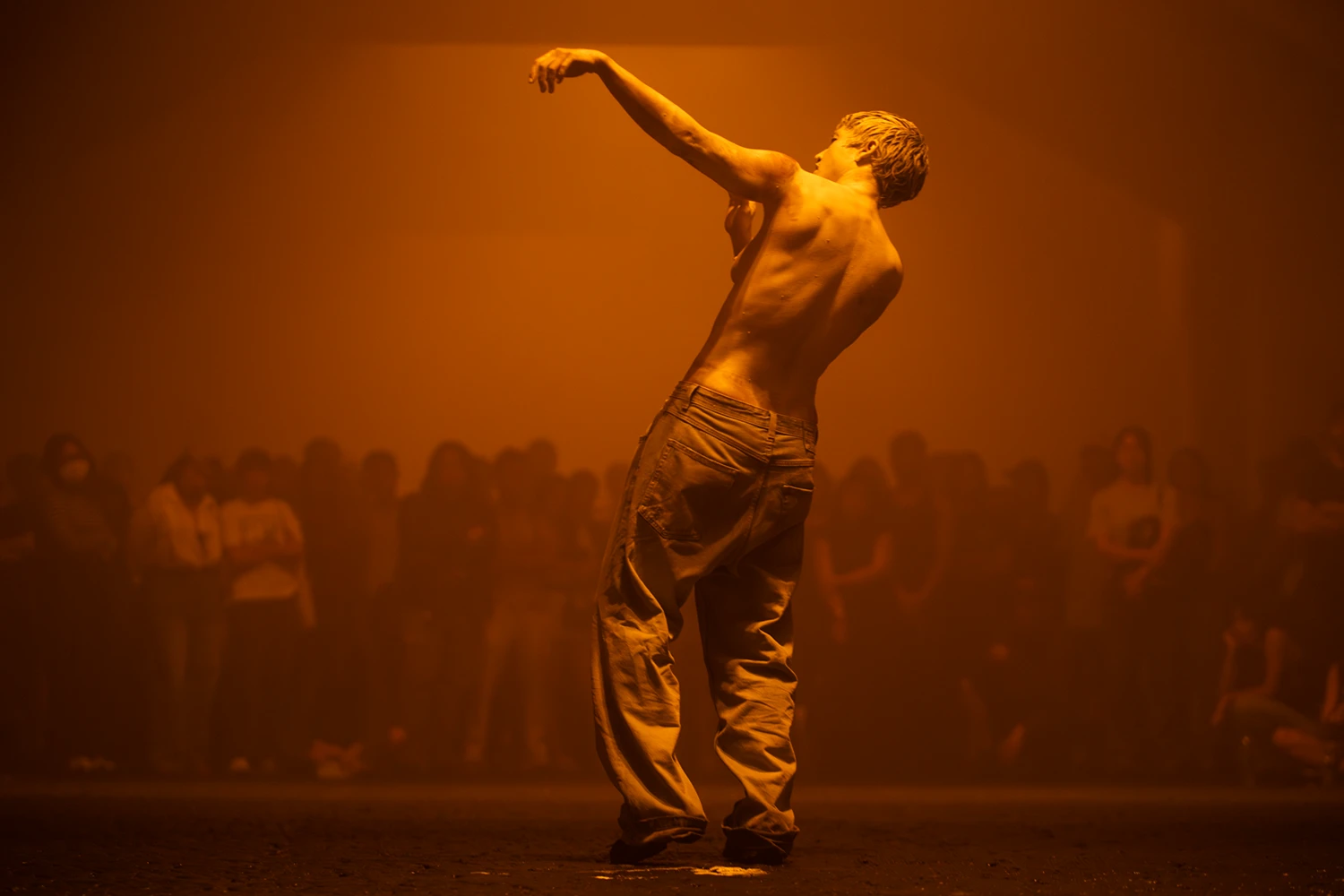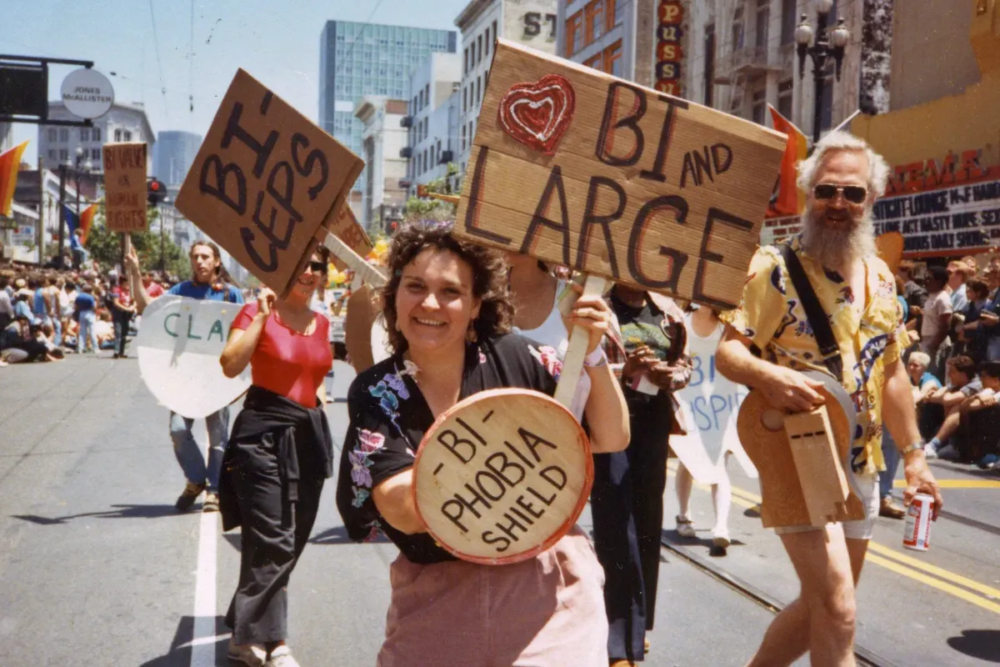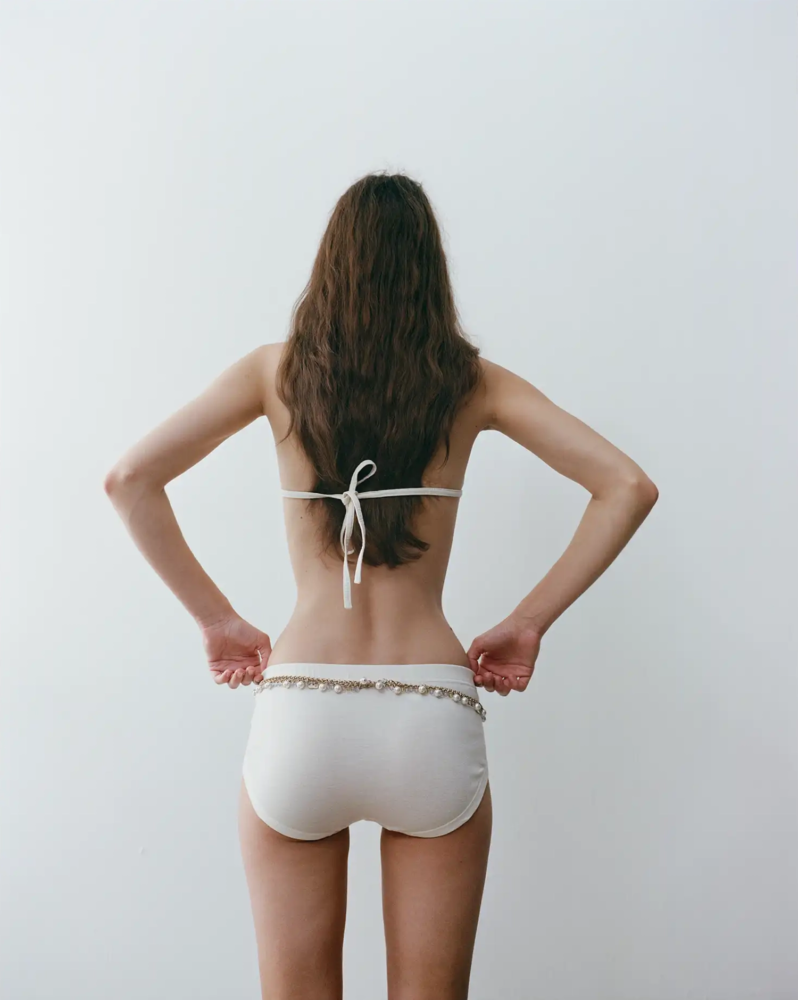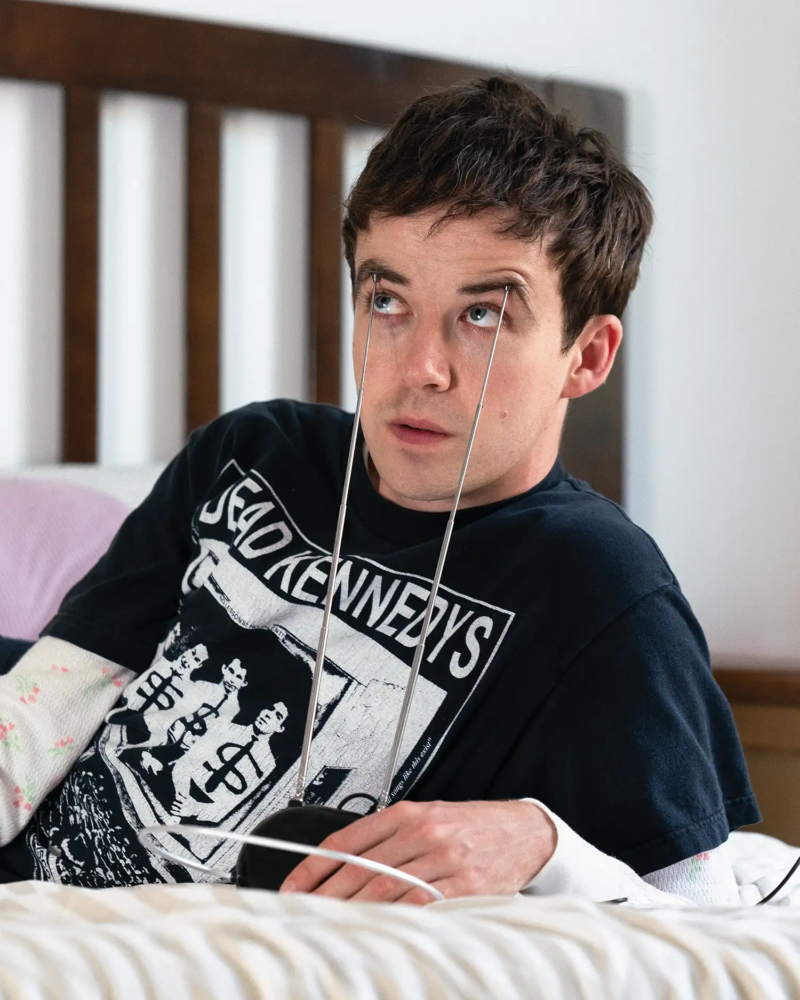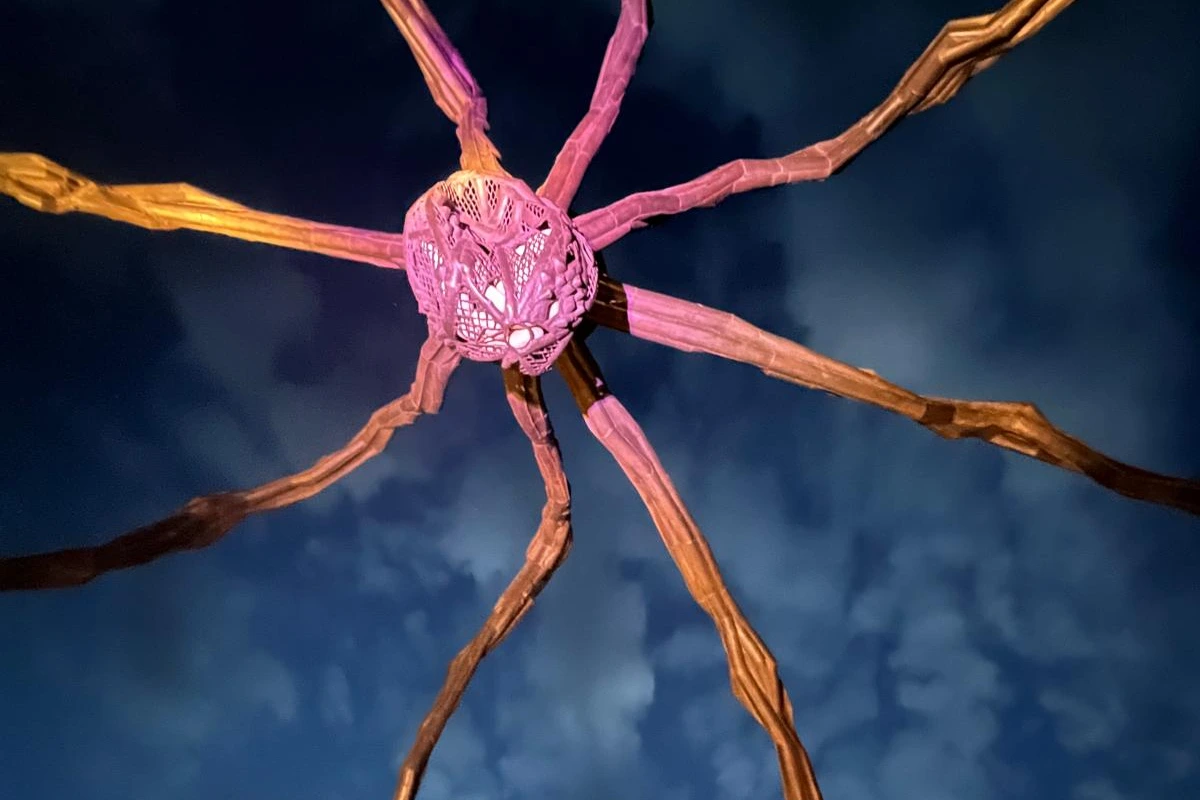
Trees and city: Khao Yai Art Forest and Bangkok Kunsthalle
From the reuse of a burnt printing house to a forest-laboratory: Stefano Rabolli Pansera recounts Khao Yai Art Forest and Bangkok Kunsthalle through reforestation, renewable energy, water monitoring, and material recycling
Forest and city: the 65 hectares of Khao Yai Art Forest and the Bangkok Kunsthalle, from a burnt printing house
Forest and city as two contiguous laboratories: on one side the 65 hectares of Khao Yai Art Forest, where art measures the time of trees; on the other the Bangkok Kunsthalle, where a burnt printing house becomes a growing exhibition organism. Here architecture is not a frame but a method; the ground is not a backdrop but a premise; care is not a word but a gesture that leaves a trace. What remains for people and places? This conversation questions sustainable practices and responsibility: what does it mean to heal a landscape and a factory? Which decisions make commitment visible? How does an artwork modify a place? What counts are measurable decisions, with no cosmetic makeup.
Two poles, a single guiding idea: Khao Yai Art Forest and Bangkok Kunsthalle. How does the mission to heal—across the dimensions of landscape and city—translate into measurable acts through learning, caring, participating; art, food, education? Operationally, what does to heal is to recover mean, and what outcomes have you already observed in each pole?
Lampoon in conversation with Stefano Rabolli Pansera, director of Khao Yai Art Forest and Bangkok Kunsthalle
Stefano Rabolli Pansera: “Khao Yai Art Forest and Bangkok Kunsthalle are two complementary poles: the first heals a natural landscape scarred by deforestation and intensive farming, the second regenerates an abandoned industrial complex in the heart of Bangkok. Healing the forest and healing the urban jungle means transforming the mission into concrete acts: replanting native trees, managing water sustainably, building educational programs with schools and universities, commissioning site-specific works, organizing community dinners and exchange moments.
We have already observed tangible results: in Khao Yai new species have begun to populate the forest; in Bangkok the Kunsthalle has become a catalyst for the public and a generator of an unprecedented critical discourse. But care does not end with practical actions: it is first and foremost a conceptual and curatorial posture. The works are devices that allow us to reconnect with nature and with space in an authentic way.
So Maman by Louise Bourgeois has become a refuge for birds, and rice paddies have grown around it, now supplying rice to the restaurant. Fujiko Nakaya’s Fog Forest has generated a parallel ecosystem of plants and insects. Ultimately, to heal is to dwell: inhabiting a space—natural or urban—means accepting its conditions and transforming them into the basis for new relationships and new memories.”
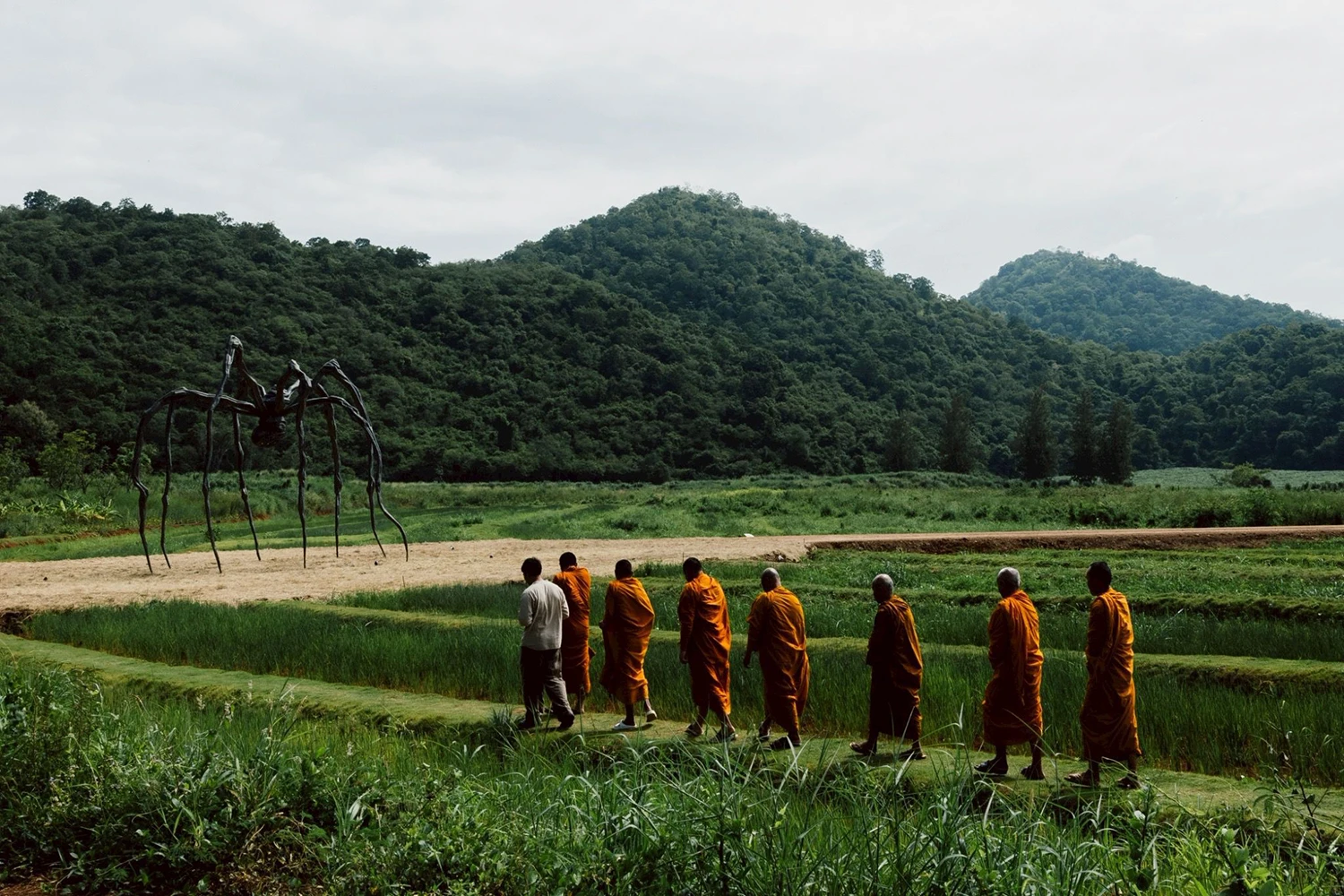
From burnt factory to Kunsthalle: taming space with art. No restoration
FJC: The building housing Bangkok Kunsthalle—formerly a printing house—does not want to conceal its “wounds,” caused by a 2001 fire.
Stefano Rabolli Pansera: “The spaces of the former Thai Wattana Panich printing house were not restored but tamed: Korakrit Arunanondchai transformed the ashes of the fire into a floor, Nicolas Amato polished a handrail, turning a service passage into a contemplative space.
Restoration would mean imposing an architectural vision on a building conceived as a passive container. Taming, instead, implies reciprocity: the space transforms the works, and the works transform the space.
The curatorial program coincides with the architectural project: exhibition after exhibition, floor after floor, the building grows like a living organism. There is no end point, only a continuous process. In this way we reject both the logic of restoration and that of reconstruction: both presuppose unusability. For us, on the contrary, the space must continue to live. The traces of the fire become narrative substance.
Blackened surfaces, peeled walls, irregular floors become an integral part of the exhibition path. It is an act of architectural sincerity that does not turn into relic or fetish: what was once a wound becomes story.”
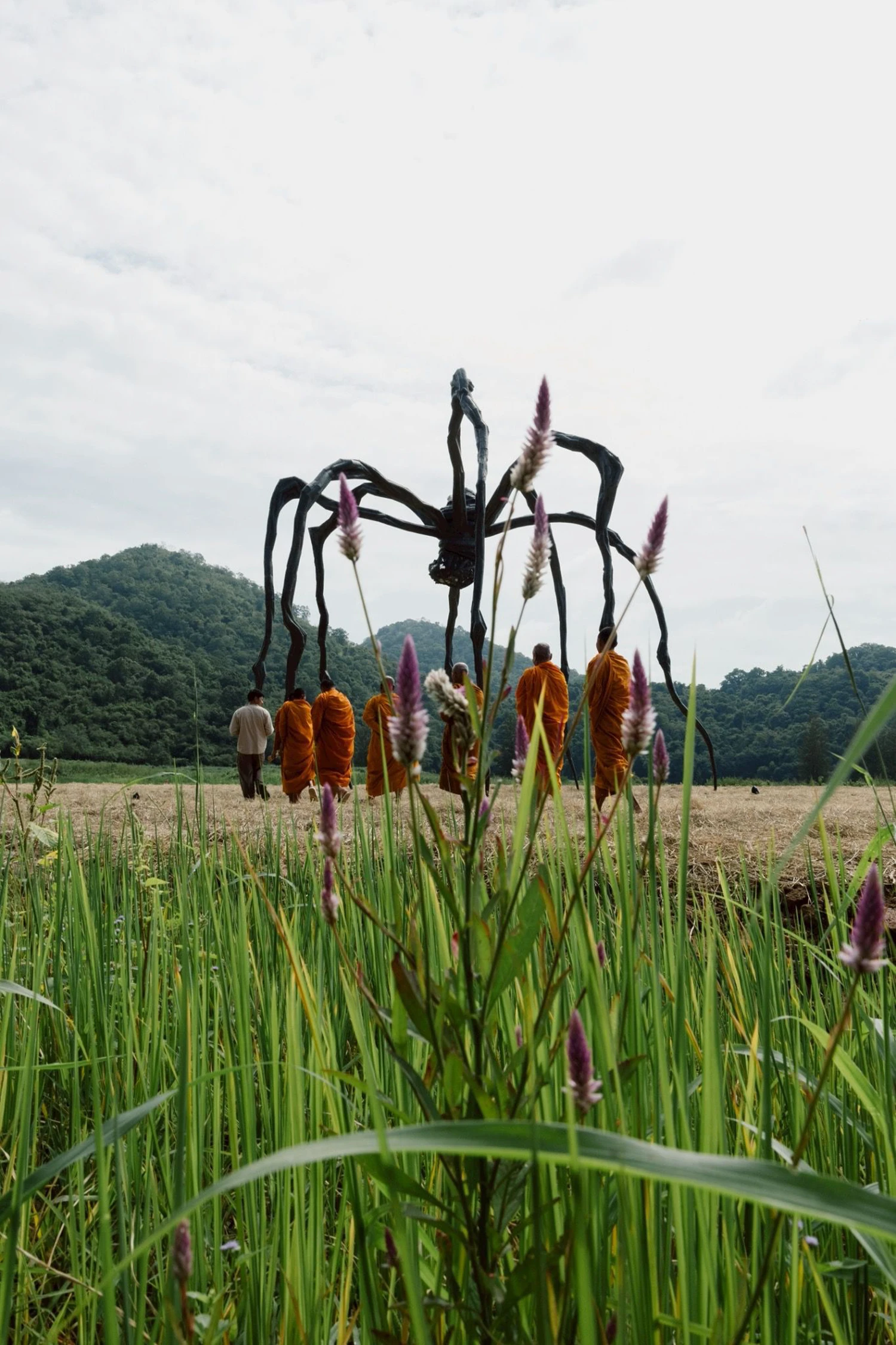
Topography and movement: when architecture becomes a critical method
FJC: How do section, elevation, slope, and access shape exhibition choices? For example, in Fog Forest the topography is not a frame but part of the work.
Stefano Rabolli Pansera: “For us, architecture is not a neutral frame, but a critical method and a precondition of the work. The ambition is that the works blend with the space until they are no longer recognized as such.
In Fujiko Nakaya’s Fog Forest, the topography becomes an integral part of the work: slopes, rises, and openings influence the density and duration of the fog, transforming the landscape into a timescape. The visitor advances, gets lost, re-emerges. The work exists because the terrain’s topography conditions the fog’s evaporation. The same happens at Bangkok Kunsthalle: artists choose spaces marked by burnt staircases, exposed beams, sudden openings, and transform them into new exhibition relationships.”
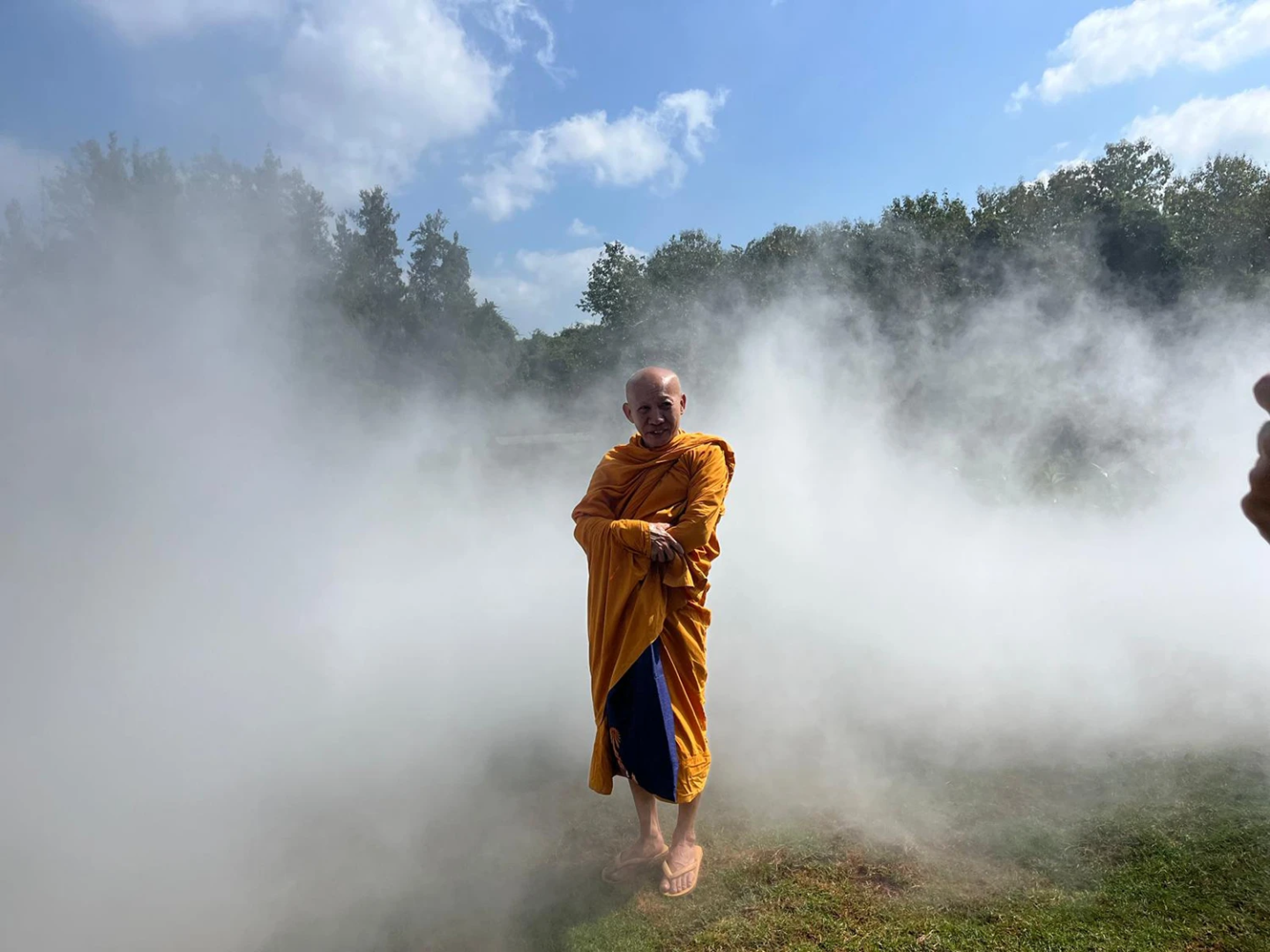
Foresting to exhibit: the ground before art
FJC: Trees and forestation. Which species, which densities, how do you manage the undergrowth in plains, hills, mountains? How does this “vegetable time” intertwine with the “mineral time” of Richard Long’s slate circle?
Stefano Rabolli Pansera: “Forest and works coexist on different but intertwined time scales: Khao Yai offers an experience of radical time—the slow growth of trees and the presence of works produce a dialectic between permanence and transformation. At Khao Yai, the artwork precedes the landscape: we do not follow the canonical sequence of masterplan and then installation, but invert the order. Each intervention begins with an original gesture: leveling the ground (bprap-na-dim). Not a pedestal to elevate, but an opening so the work may occur.
With Richard Long, Ubatsat, Francesco Arena or Louise Bourgeois, horizontality was the spatial condition for the work. With Delcy Morelos, the excavation that revealed only unmovable boulders will become a stone garden, transforming a technically adverse condition into poetic epiphany.”
Water from air, energy from the sun: sustainable fog adapting to monsoons
FJC: Fujiko Nakaya’s fog comes from water captured from the air. What is the energy balance of the system and how does it vary between dry and monsoon seasons? More generally, which protocols do you adopt to reduce environmental impact?
Stefano Rabolli Pansera: “The Fog Forest uses locally collected water through a system patented by Aquaria, a Californian start-up partnering in the project. The energy comes from solar panels and is calibrated to the seasons: during the monsoon, the fog integrates with natural humidity; in the dry season it requires more compensation, always kept within sustainable balances. We have defined clear protocols: use of renewable energy, monitoring of water footprint, reduction of transport, reuse of materials. Even the frequency of activations is calibrated, to make the work sustainable and allow the fog to generate a parallel ecosystem.”
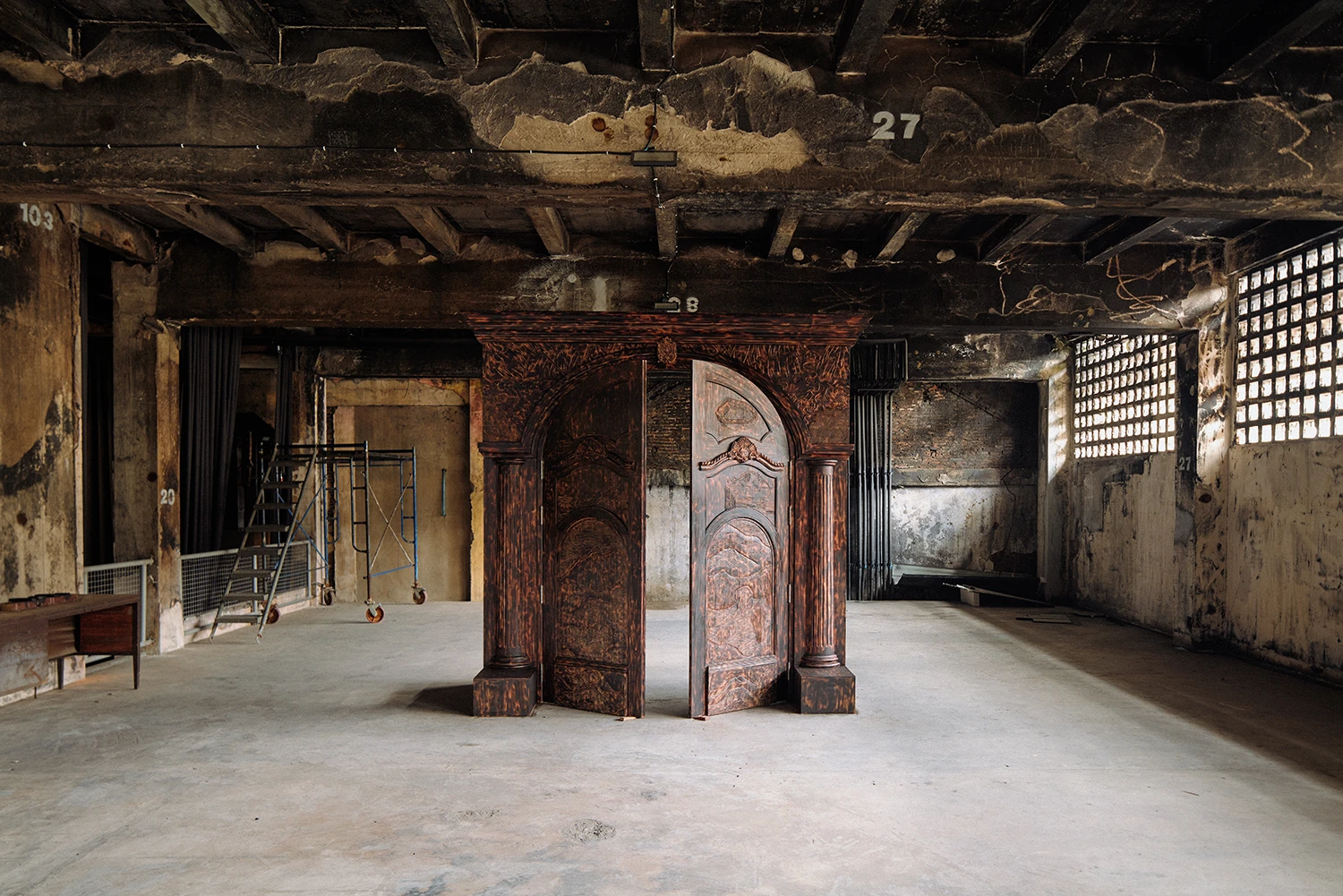
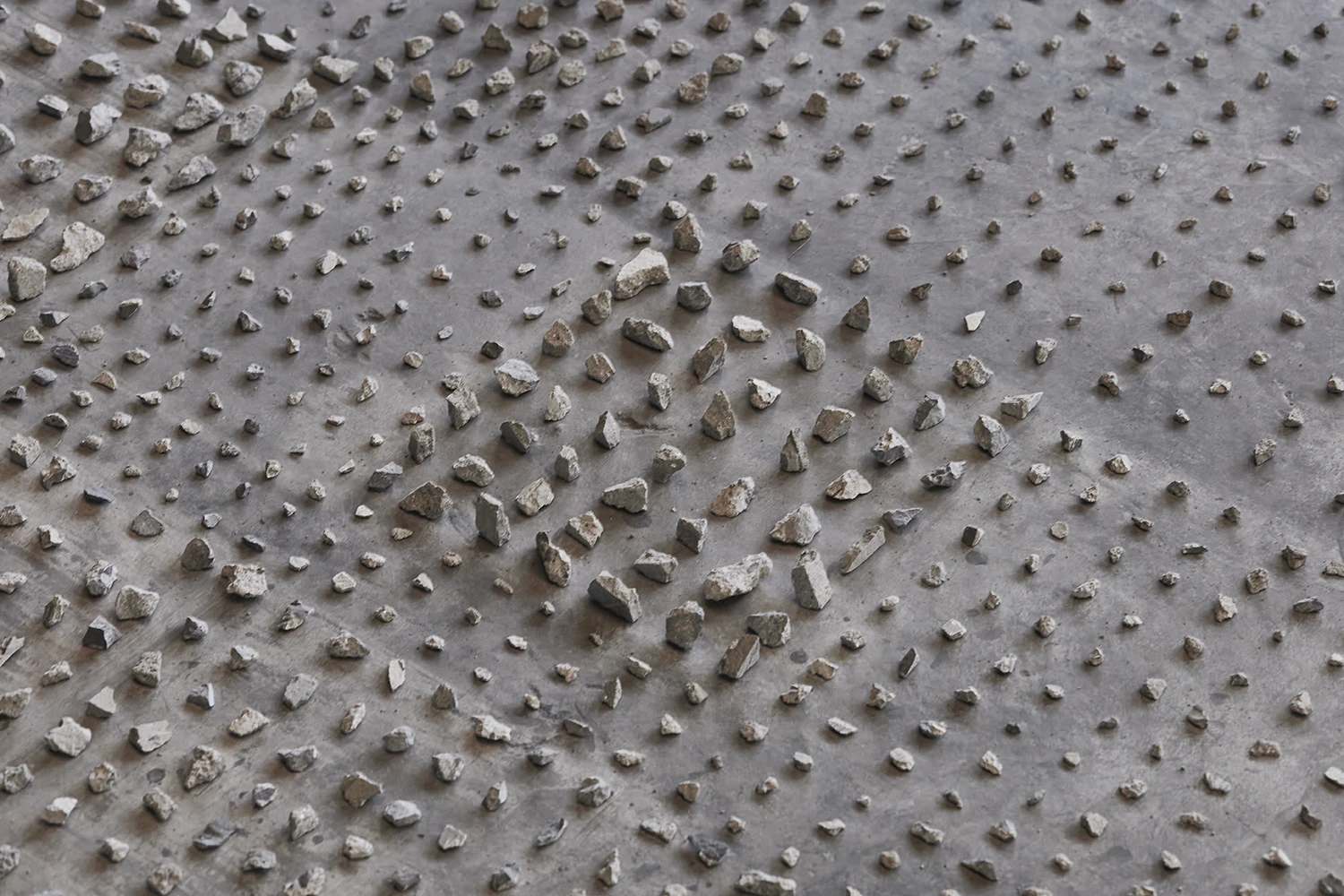

Rough matter that teaches: reading GOD with the body before the captions
FJC: There is raw materiality in Francesco Arena’s GOD: two boulders, a responsibility of the gaze. How does this physicality educate the public and foster a direct encounter with the works, without excessive apparatus?
Stefano Rabolli Pansera: “GOD by Francesco Arena was the first work installed at Khao Yai. Two boulders, between which a word was engraved and is now invisible: what remains is only imaginable, never legible. Reading becomes an act of faith. The power of the work lies in its nakedness: two blocks that force the viewer to confront their weight and gravity. There are no redundant apparatuses, no invasive mediation: it is the matter itself that educates the gaze. Many visitors approach to touch the stone, as if to perceive through touch the energy compressed in thirty tons.”
What to make public: measuring numbers and the quality of discourse
FJC: Can care be measured? Between the forest and the Bangkok Kunsthalle, which indicators do you make public—access, participation, educational results, quality of discourse—and how are they reflected in repair practices such as Yoko Ono’s Mend Piece?
Stefano Rabolli Pansera: “Care cannot be measured: it transforms. We make public data on access, participation, educational programs. But what matters is the quality of participation and the coherence of the cultural discourse generated. Each exhibition is evaluated for its ability to produce texts, meetings, debates, to open new trajectories. Yoko Ono’s Mend Piece shows this clearly: the gesture is not to repair an object but to make visible a community taking care of the work. That is where care is truly measured.”
Human reactions in the forest: listening without exoticizing, mediating without taming
FJC: Two artists, a mirror of seeing. Louise Bourgeois’s Maman; Araya Rasdjarmrearnsook’s Two Planets, a video where farmers, workers, and monks look at reproductions of Le Déjeuner sur l’herbe and The Gleaners. Which reactions have you recorded—words, laughter, silences, gestures—in front of contemporary art? How have they oriented mediation, respect for religious sensitivities, and care for the place, avoiding stereotypes and exoticization?
Stefano Rabolli Pansera: “The location of the works in the forest radically changes perception. Araya’s Two Planets shows it: monks observe reproductions of Western masterpieces in the natural context. And we, spectators in the forest, observe them. And we become like them.
The video in nature acquires further power, and the reactions—surprise, laughter, meditative silences—have taught us to listen rather than impose interpretations.
With Bourgeois’s Maman something similar happened: the ambiguity between protection and threat dissolved. Installed in nature, the work found its own ecosystem: birds built nests among the marble eggs, embodying Bourgeois’s concept of motherhood. The blessing of Maman by Buddhist monks happened without spectacle, respecting religious and social sensitivities. It was not about exoticizing difference, but about opening a space for dialogue.”
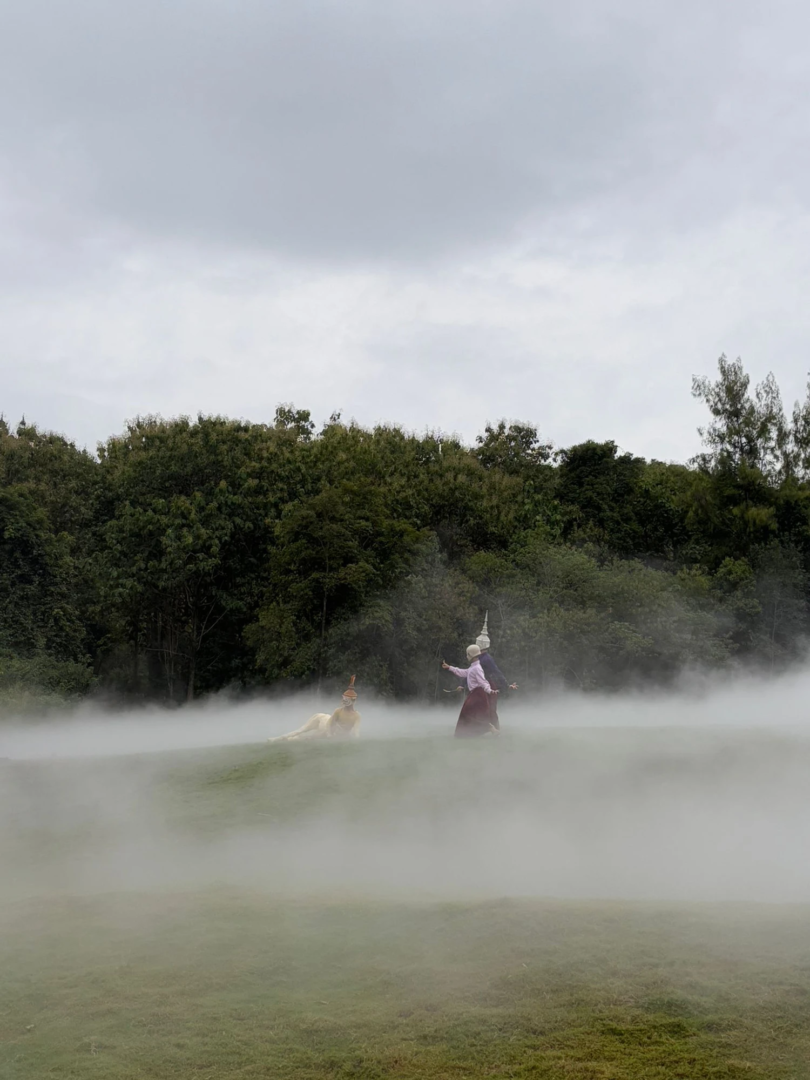
A bar that opens once a month: controlled sociality and landscape impact
FJC: K-BAR as a monthly social rite in the landscape. Why this choice? How do you govern flows, waste, noise, and light in an environment requiring protection?
Stefano Rabolli Pansera: “K-BAR is an anti-oasis by Elmgreen Dragset: a bar inspired by Martin Kippenberger that remains always closed, opening only one Saturday a month. It is an anti-ritual, an act of denied hospitality.
Management is integral to the project: controlled access, cosmopolitan menus decided by the artists themselves, careful control of waste, noise, and lights. It is not entertainment but a calibrated gesture of deferred sociality.”

Next steps: commissions in the forest, domesticity in the city, operational alliances
FJC: A look at the coming months. What is the route ahead—new commissions in the forest, development of the Bangkok Kunsthalle, educational programs, maintenance of outdoor works?
Stefano Rabolli Pansera: “Our event horizon does not exceed twelve months: the path is not linear but made of listening and adaptation.
At Khao Yai we want to consolidate the Land Art 2.0 model with one annual commission. We are realizing Delcy Morelos’s work: an ovoid table 400 meters long transforming an excavation into a stone garden. The construction itself becomes a community performance, involving local workers.
At the Kunsthalle we focus on expanding spaces and strengthening networks. Upcoming exhibitions will reflect on the theme of domestication: Spencer Sweeney has transformed one floor of the Kunsthalle into a studio-laboratory; Bruce Nauman’s Mapping the Studio will show the studio as artwork; Description without Place with Absalon’s living Cells will introduce for the first time in Asia a radical reflection on domesticity.
Criticalities such as costs, climate, and distances will be addressed with co-productions and museum partnerships. The route remains the same: healing through art. In the forest as in the city.”
Stefano Rabolli Pansera
Stefano Rabolli Pansera (Brescia, 1980) is an architect and curator. He directs Bangkok Kunsthalle and Khao Yai Art Forest in Thailand—promoted by collector and philanthropist Marisa Chearavanont. He is also founder and artistic director of the St. Moritz Art Film Festival; co-founded Beyond Entropy and was previously director at Hauser & Wirth in London and St. Moritz. In 2013 he received the Golden Lion as co-curator of the Angola Pavilion at the Venice Biennale.
